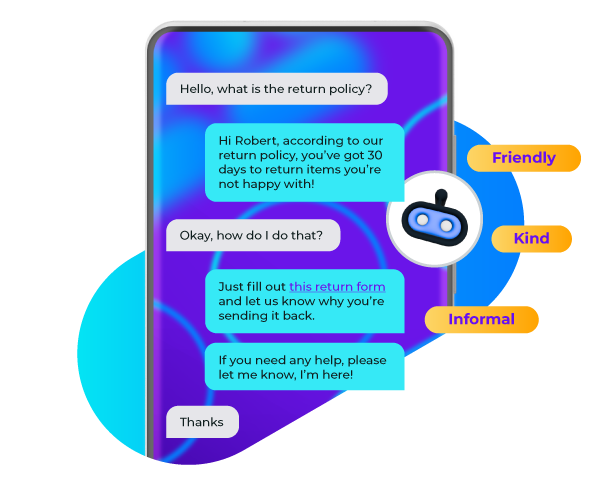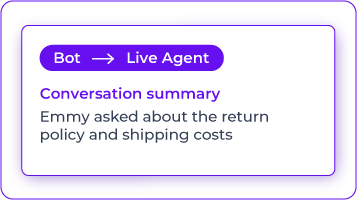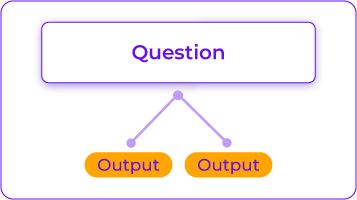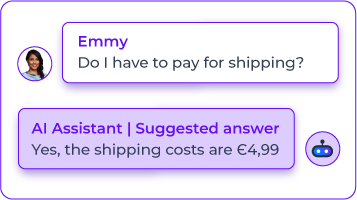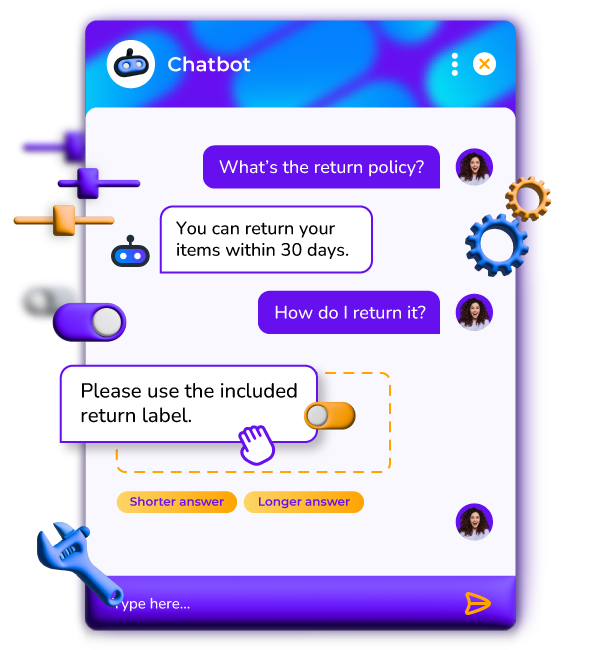
Chatbots used to be static and robotic. Generative AI changed all that. You can now facilitate human-like conversations in any language at scale. Technology has never been smarter. And never been friendlier.
Natural language flows
High contextual awareness
Multi-lingual support
Make sure your chatbot can help your customers in a personal way, even if that means handing over to a live agent.
Use your chatbots to help customers with transactions, whether a purchase, information or status update.
Make your chatbot available across any channel, including your website, WhatsApp, Instagram, and more.
Ensure your chatbot can chat naturally, understand what customers want and offer the needed options.
Generative AI processes user data, so data protection is key. Rest assured, Your data is stored in the European region for compliance and remains confidential. It will never contain Personal Identifiable Information (PII) and will not be used to train large language models.
You can trust our bot to have valuable conversations with your customers. We have implemented measures against hallucinatory responses and malicious prompt injections.
Contact us to get startedSelect a region to show relevant information. This may change the language.
